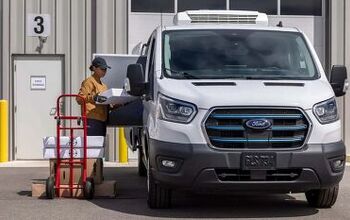The Truth Behind Common Insurance Myths
We think open discussion and information is good for the insurance business. Otherwise, it’s easy for misconceptions to spread and become common knowledge. Misunderstanding the ins-and-outs of your insurance policy could be a costly mistake, which is why we’re taking the time to tackle some of the most common myths when it comes to auto insurance.
The Credit Score VS your Insurance Rate
THE MYTH: Your credit score is what determines your insurance rate.
THE REALITY: Not 100% true, but your credit score does factor in. A credit score is different from a credit-based insurance score. Credit score is seen as predictor of a consumer being late on a payment, while a credit-based insurance score models how likely you are to file a claim. Some basic factors used to calculate an insurance score are:
- Credit mix (your auto loan, mortgage, and credit cards)
- Credit history (how long you’ve had a credit line)
- Payment history (on-time and late payments of outstanding debt)
- Credit applications (recent new lines of credit applied for)
- Debt obligation (how much outstanding debt do you have)
So, a credit score can be the deciding factor regarding your approval for a loan or line of credit. However, your credit-based insurance score along with your driving record, age, experience, location, and other factors is what insurers use to determine insurability and your premium rate.
State Mandated Minimum VS Full Coverage
THE MYTH: State mandated minimum auto insurance requirements are the same as full coverage insurance.
THE REALITY: Different states require different limits and coverages of auto insurance, but full coverage is a policy that includes collision and comprehensive coverage. If you are only buying the minimum auto insurance required by your state you might not be covered for things like natural disasters (hail, flood, etc.).
Both collision and comprehensive are in addition to a state’s minimum car insurance requirements. Pets, after-market add-on accessories, and personal items typically aren’t covered by basic policies. Supplemental coverage and optional endorsements like Toyota Auto Insurance Pet Passenger® Coverage can help fill any gaps in your policy.
Red Cars have Higher Rates
THE MYTH: It’s more expensive to insure a red car.
THE REALITY: This is a myth, but it does have a bit of science behind it. Bright colors attract our attention, and your local police are no exception to that rule. For example, this means the eye will prioritize a brightly colored car, even if there are two vehicles travelling at the same speed. Your premium, however, is calculated on your past driving behavior and other factors. So, the good news is, your insurance carrier doesn’t care what color your car is unless you’ve invested in a custom paint job outside the factory color you purchased. That 3rd party cosmetic choice may require an optional add-on to your insurance policy.
Business Use VS Personal Use
THE MYTH: Business use of your vehicle is covered by personal insurance.
THE REALITY: It’s really complicated and depends on what you were using the car for at the time of an incident.
Commercial coverage may be the best choice for a company-owned vehicle, while a Hired and Non-Owned Auto Insurance policy (HNOA) is something to consider if you are participating in the gig economy. Overall, the best thing you can do is figure out how different policies work and see what coverage best suits your needs.
New Car VS Old Coverage
THE MYTH: I have 30 days to notify my insurance company when I buy a new car.
THE REALITY: Why would you want to wait 30 days?
It’s best to let your carrier know of your purchase immediately, to protect against any potential gap in coverage. The insurance grace period differs from state to state and can be anywhere from 7 to 30 days. If you have an active policy at the time of purchase it may extend coverage to your new car automatically, but you should check if you’re unsure. Also, if your current policy does not have endorsements like comprehensive car insurance, any policy coverage extended in the grace period will not include anything your previous policy did not offer.
Regardless, car dealerships require proof of insurance to drive off the lot, so plan on bringing proof of coverage with you.
Driving Someone Else’ Car
THE MYTH: If someone else drives your car they are covered by their own insurance.
THE REALITY: There are no absolute rules when it comes to who is covered while driving your car unless they are explicitly listed on the policy.
It is important to understand the concept of ‘permissive use’. Insurance companies will ask if there are drivers who have access to the vehicle. If they do, a carrier might request they be added or excluded from the policy.
For example, a teenager who is listed on their parents’ policy is likely fully covered while driving their mom’s car. If a non-family member borrows the car (with consent), their liability coverage likely extends to the vehicle, but full coverage might not. The short story? Be careful borrowing others’ vehicles, or letting other people drive yours.
Items Inside my Car are Covered
THE MYTH: Property stolen from my car or damaged in an accident is covered.
THE REALITY: Unless you have specific language written into your auto policy, chances are your personal items are not covered beyond a small amount.
Personal items require personal property coverage (like homeowner’s or renters’ insurance), not just car insurance. Even comprehensive car insurance, which covers permanent, factory-installed features of the car, does not necessarily cover personal items damaged in an accident. Also, liability coverage does not cover vandalism or theft.
Insurance Company Repair Shop
THE MYTH: I must take my car to the repair shop recommended by my insurance company.
THE REALITY: The law protects your decisions as a consumer and prevents your carrier from requiring you go to their recommended facility.
Insurance companies negotiate contracts with local repair shops—they receive lower labor, materials, and parts costs in return for their recommendation—but you are not required to use the recommended facility. Repair parts at some facilities can be non-original, or like kind parts that are similar in type, condition and quality to parts made for, or by the original car manufacturer.
Be sure to ask about the quality of the parts used in repairs at any facility you visit. For recent model year Toyota vehicles Toyota Insurance can help find policies that will pay for Toyota Genuine Parts, if available in your area.
Zip Code VS Insurance
THE MYTH: My insurance rate isn’t affected by where I live.
THE REALITY: Location tells insurance companies a lot about potential risks, so it plays a role in determining your rate.
Cities are more densely populated, which typically means accidents occur more often resulting in higher insurance rates for urban drivers versus rural drivers. In some rural states, though, long commutes equate to more time on the road, increasing the likelihood of an accident claim. Factors like theft and vandalism rates, availability of public services, the number of claims in your area, road conditions, and exposure to natural disasters all affect the rate you are quoted.
In conclusion, you want to understand and separate myth from fact to make the most of your insurance options. One of best ways is to speak to an experienced independent agent like those at Toyota Insurance. Always there to make sure you get the value, innovation, and expertise you expect from Toyota when it comes to protecting your assets.
*This article is sponsored by Toyota Insurance Management Solutions
More by AutoGuide.com News Staff




































Comments
Join the conversation